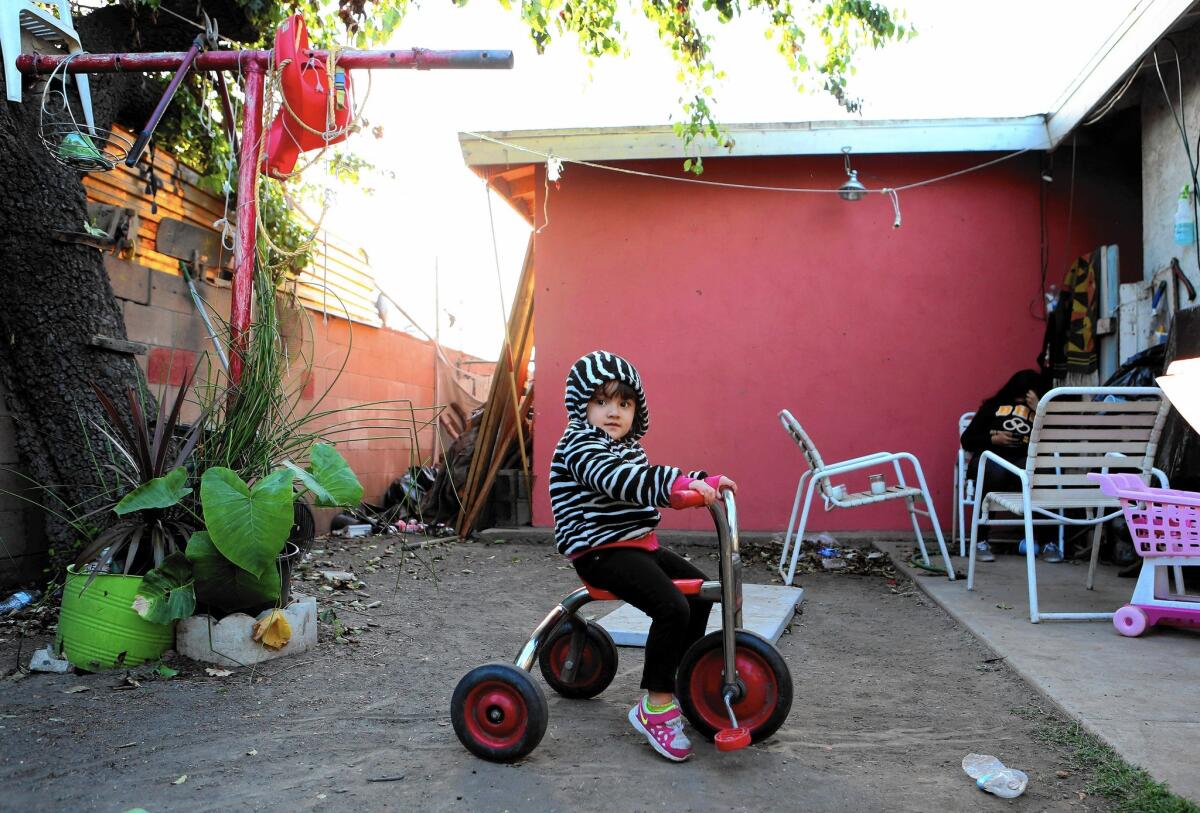Why so few take paid parental leave

A day after Alex Gustafson’s wife gave birth to their daughter in December, he officially began the 12 weeks of fully paid family leave offered by Automattic Inc., the San Francisco tech company where he works.
Anthony Goytia of La Puente wishes he had that option. When his wife gave birth to their daughter in April, they lost about $550 of monthly income. So Goytia started working a second job at Macy’s to supplement his early shift unloading trucks at UPS.
California is far ahead of the rest of the country in providing paid leave to workers. But even here, employees’ ability to take time off hinges on where they work and how much they make.
More than a decade after the state introduced a revolutionary leave policy, the state’s poorest workers remain the least likely to take time off to care for their relatives, state data show.
Twenty-five percent of Californians who took the state’s leave in 2014 earned more than $80,000 and 12% made $20,000 or less, state data show.
“There are two Californias when it comes to paid leave,” said state Assemblyman Jimmy Gomez (D-Echo Park). Gomez introduced a bill that increased the amount that the state would pay workers while take time off to care for newborns or sick family members. The bill was signed into law by Gov. Jerry Brown this month and will go into effect in 2018.
“If you structure [paid leave] in a way that only the people at the higher end can use it, those people are the only ones getting the benefit of more time with their children. The folks at the lower end can’t take the time off,” Gomez said.
The state paid-leave program creates a floor for full-time workers. But there’s a stark difference in what employers offer beyond that.
Tech behemoths have rushed to outdo one another in the number of weeks they’ll pay employees to be with their children. After Netflix Inc. announced in August that parents could take a year off to care for new children, companies such as Adobe Systems Inc., Microsoft Corp. and Facebook Inc. quickly made their leave policies more generous.
At Toyota Motor Co.’s U.S. headquarters in Torrance, though, women do not get any paid leave beyond what the state offers. Even tech companies aren’t all created equal: Qualcomm Inc. in San Diego, which makes communications chips, offers six weeks of paid bonding leave for new parents. Western Digital Corp., a data storage company in Irvine, offers to pay employees who take the state leave an extra 5% of their salary.
California was the first state to offer time off for employees, with a 2002 law that offered up to six weeks off at 55% of a worker’s salary. The program is funded by a 0.9% payroll tax, paid by 17.2 million employees in the state.
Starting in 2018, California will pay most workers 60% of their salary while they take leave to care for their family. The new state program will allow the lowest-wage workers to claim 70% of their pay for up to six weeks. The payroll tax isn’t expected to go up initially because relatively few people are drawing the benefit.
In April, San Francisco became the first city in the country to mandate full pay for six weeks of family leave for all employees — requiring companies to pay 45% of workers’ salaries on top of what the state fund covers.
Paid leave may be more than just a nice perk for parents; some economists say it could alter the career trajectories of millions of Americans.
Women began flooding the labor force in the 1960s, and they single-handedly drove almost all increases in family income for middle-class workers from 1970 on, according to a White House report. But after rising steadily for five decades, women’s participation in the labor force peaked at 60% in 1999 and has since declined to 57%.
Compensating working women to be with their children seems to be one way to get them to work more. California women with children worked 6% to 9% more hours a week after the leave went into effect in 2004, and saw their earnings increase, according to a 2013 study by researchers Maya Rossin-Slater of UC Santa Barbara, Christopher J. Ruhm of the University of Virginia and Jane Waldfogel of Columbia University.
“Paid family leave allows people to take leave and then return to their position, and that might enable you to continue to work and rise up in the ranks, which might improve your wage down the road,” Rossin-Slater said.
Still, for the vast majority of workers, who aren’t in Silicon Valley, staying home after having a baby remains an unattainable luxury.
Only 25% to 40% of California mothers who are eligible for state leave actually take it, according to a report by the UC Davis Center for Poverty Research. Overall, less than 2% of all workers in the state used the benefit from 2013 to 2014.
Only 11% of American workers formally have the right to get some pay during a birth leave, according to a report from White House economists.
People may hesitate to take a break under the state law, worker advocates say. The measure doesn’t guarantee that workers will be able to return to any job after taking leave, and federal law only prevents large employers from firing workers who have worked at the company for a year.
“It gives your boss the right to say yes or no. Bosses love that, but if you have a new baby, it’s a scary situation,” said Jenya Cassidy, the director of California Work & Family Coalition, a nonprofit that has campaigned to expand benefits for new parents.
Rhode Island and New Jersey are the only other states that have already followed California’s lead. Rhode Island prevents employers from firing people for taking time to be with their kids. New York passed a paid leave law that will go into effect in 2018, and will also protect parents’ jobs if they use the program.
Goytia’s wife, Maria, will take the state-provided leave from her job at Party City in Baldwin Park, and get 55% of her pay.
Goytia did not feel comfortable taking time off from both of his jobs when his daughter was born April 8; he feared that might put his new position at Macy’s in jeopardy.
“I don’t feel like I had a choice,” he said. “We would have not been able to pay the rent just on my salary from one job alone.”
Twitter: @NatalieKitro
ALSO
91 Freeway in O.C. reopens after 2-hour standoff; suspect in custody
San Andreas fault ‘locked, loaded and ready to roll’ with big earthquake, expert says
Inside North Korea’s Children’s Palace, a reporter finds children turning into robotic grown-ups
More to Read
Inside the business of entertainment
The Wide Shot brings you news, analysis and insights on everything from streaming wars to production — and what it all means for the future.
You may occasionally receive promotional content from the Los Angeles Times.











